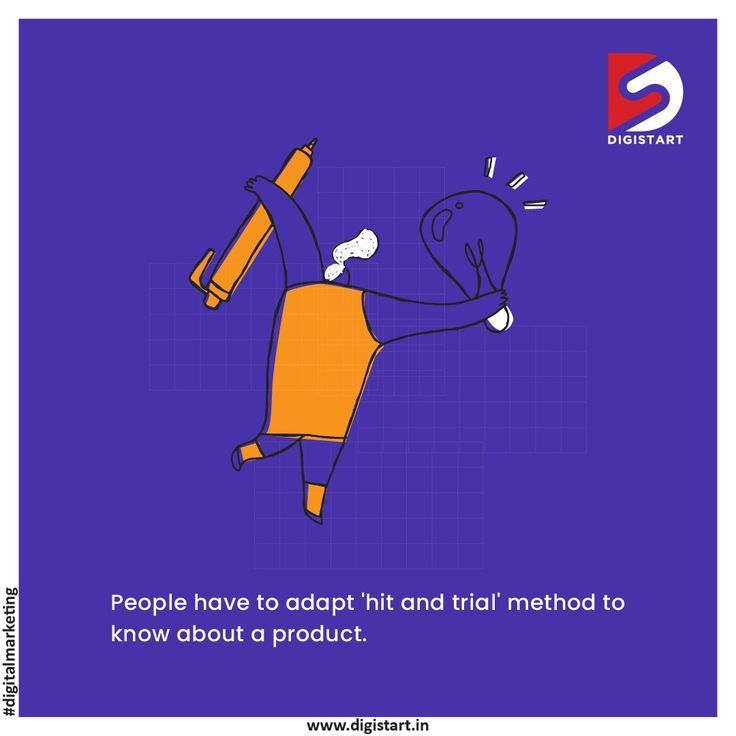Google Display Ads: Three Key Marketing Objectives Through Strategic Targeting
Google display ads: three key marketing objectives through strategic targeting
The Google display network reach over 90 % of internet users worldwide, present an enormous opportunity for marketers to achieve specific business goals through strategic targeting. Understand the core marketing objectives that can be achieved through Google display ads target is essential for create campaigns that deliver measurable results.
This comprehensive guide explore the three primary marketing objectives achievable through Google display ads target: awareness building, consideration driving, and conversion optimization. We will examine how each objective aligns with different targeting strategies and business goals.
Awareness: expand your brand’s reach
The first marketing objective that can be efficaciously meet through Google display target is awareness. This top of funnel goal focus on introduce your brand, products, or services to new potential customers who may not be familiar with your offerings.
Key targeting strategies for awareness
When build awareness campaigns on the Google display network, several target approaches prove especially effective:
-
Demographic targeting:
Reach audiences base on age, gender, parental status, or household income to ensure your message reach the right demographic segments. -
Affinity audiences:
Target users base on their long term interests and habits, help you reach people who already have established interests relevant to your products or services. -
In market audiences:
Connect with consumers who are actively research or consider products or services similar to yours. -
Custom intent audiences:
Create audiences base on keywords and URLs relate to the products and services you offer.
For awareness campaigns, broad target parameters frequently work advantageously. The goal isn’t immediate conversion but sooner make potential customers familiar with your brand for future consideration.
Measure awareness campaign success
Success metrics for awareness focus targeting include:
- Impressions
- Reach
- Frequency
- Brand lift studies
- View-through rates
A furniture retailer launch a new collection might use demographic and affinity target to reach homeowners interested in interior design. Their campaign would focus on visually appeal ads showcase the collection’s aesthetic kinda than push immediate sales.
Best practices for awareness targeting
To maximize the effectiveness of awareness focus targeting:
- Use compelling visuals that distinctly communicate your brand identity
- Craft messages that highlight what make your brand unique
- Maintain consistent branding across all creative assets
- Set frequency caps to prevent ad fatigue
- Utilize responsive display ads to adapt to different placements
Remember that awareness campaigns require patience. The impact may not be directly measurable in direct conversions but build valuable brand equity over time.
Consideration: engage interested prospects
The second key marketing objective achievable through Google display target is consideration. This mid-funnel goal focus on engage users who have shown some interest in your category or brand but haven’t heretofore commit to a purchase.
Effective targeting strategies for consideration
For consideration focus campaigns, more refined target approaches yield better results:
-
Custom segments:
Target users base on specific search terms they’ve used, websitesthey havee visit, or apps they’installtal. -
Remarket:
Re-engage users who have antantecedentterinteracted your website, app, or youYouTubentent but haven’t conconverted -
Similar audiences:
Reach new users who share characteristics with your current customers. -
Topic targeting:
Place your ads on sites relate to specific topics relevant to your business.
Consideration campaigns benefit from a more focused approach than awareness campaigns, with target parameters design to reach people with demonstrate interest in your category.
Measure consideration campaign effectiveness
Key metrics for evaluate consideration campaigns include:
- Click-through rate (ctr )
- Engagement rate
- Time spend on site
- Page views per session
- Video completion rates
- Newsletter sign-ups
A software company might use remarket to target users who visit their product pages but didn’t sign up for a free trial. Their ads would highlight specific features and benefits, address common objections that prevent conversion.
Best practices for consideration target
To optimize consideration focus targeting:
- Create segmented remarketing lists base on specific user behaviors
- Develop content that address common questions and objections
- Use ad formats that allow for more detailed information sharing
- Implement sequential messaging that build knowledge over multiple impressions
- Include clear calls to action that encourage deeper engagement
Consideration campaigns bridge the gap between initial awareness and final conversion, provide prospects with the information they need to move close-fitting to a purchase decision.
Conversion: drive action and sales
The third critical marketing objective achievable through Google display target is conversion. This bottom of funnel goal focus on motivate qualified prospects to take specific actions that flat benefit your business, such as make purchases, submit contact forms, or sign up for services.
Strategic targeting for conversion
Conversion focus campaigns require the virtually precise targeting approaches:
-
Remarketing lists for search ads (rRosa)
Target users who have antecedent vivisitedour site when they perform related searches. -
Customer match:
Upload your customer data to target exist customers or similar audiences. -
Dynamic remarketing:
Show user the specific products they view on your site. -
Combination targeting:
Layer multiple target methods to create extremely specific audience segments.
Conversion campaigns benefit from narrow target parameters, focus resources on users virtually likely to complete desire actions.
Measure conversion campaign success
Key performance indicators for conversion campaigns include:
- Conversion rate
- Cost per acquisition (cCPA)
- Return on ad spend (rROAS)
- Average order value
- Revenue generate
- Lead quality
An e-commerce retailer might use dynamic remarketing to show specific product ads to users who abandon their shopping carts. The ads would include compelling offers like free shipping or limit time discounts to overcome final purchase hesitations.
Best practices for conversion targeting
To maximize conversion focus targeting effectiveness:
- Implement clear, compelling calls to action
- Create a sense of urgency with limited time offers
- Address specific objections that prevent conversion
- Ensure landing pages flat align with ad messaging
- Test different bidding strategies optimize for conversions
- Use conversion tracking to measure and optimize performance
Conversion campaigns represent the culmination of your marketing funnel, turn interest and consideration into tangible business results.
Integrate all three objectives in comprehensive campaigns
While each marketing objective can be pursued singly, the virtually effective google display advertising strategies integrate all three objectives into a cohesive campaign structure.
Create a full funnel approach
A full funnel approach to google display target might include:
-
Awareness campaign
Use affinity and demographic target to introduce your brand to potential customers -
Consideration campaign
Use remarketing and similar audiences to engage users who have show initial interest -
Conversion campaigns
Use dynamic remarketing and combination target to drive final actions
This integrated approach creates a seamless journey for prospects, move them course from awareness to consideration to conversion.
Budget allocation across objectives
Effective budget allocation vary by business type and goals, but a common distribution might be:
- 40 % to awareness campaigns
- 30 % to consideration campaigns
- 30 % to conversion campaigns
This allocation recognize the importance of fill your funnel with new prospects while likewise move exist prospects toward conversion.
Measure cross objective success
Comprehensive campaign measurement should include:
- View-through conversions that track users who see your ads but convert belated
- Multitouch attribution models that assign appropriate credit across touchpoints
- Lifetime value calculations that measure long term customer relationships
- Brand lift studies that quantify awareness impact
These metrics provide a more complete picture of campaign performance than focus entirely on direct conversions.
Advanced targeting techniques for each objective
As your Google display advertising strategy matures, consider these advanced target techniques for each objective:
Advanced awareness targeting
-
Life events targeting:
Reach users during major life changes like move, graduation, or marriage -
Seasonal event targeting:
Align campaigns with holidays or seasonal trends -
Connected TV targeting:
Reach users watch content on streaming devices
Advanced consideration target
-
Custom combination lists:
Create audience segments base on multiple behaviors -
Sequential remarketing:
Show different ads base on previous ad interactions -
YouTube engagement targeting:
Reach users who have engaged with your video content
Advanced conversion targeting
-
Cart abandonment sequences:
Target users with specific messaging base on abandon products -
Predictive audiences:
Use machine learn to identify users almost likely to convert -
Offline conversion tracking:
Connect online ad interactions to offline sales
These advanced techniques allow for progressively sophisticated target as your campaigns evolve.
Common targeting pitfalls to avoid
When implement target strategies for each marketing objective, avoid these common mistakes:
Awareness targeting pitfalls
- Target overly narrowly, limit potential reach
- Use direct response message inappropriate for new prospects
- Fail to establish clear brand identity in creative assets
Consideration target pitfalls
- Remarket excessively sharply, create ad fatigue
- Use the same messaging across all audience segments
- Neglect to address specific questions relevant to the consideration phase
Conversion targeting pitfalls
- Set unrealistic conversion expectations for cold audiences
- Use weak or unclear calls to action
- Create disconnect between ad promises and landing page experiences
Avoid these pitfalls ensure your target strategies efficaciously support each marketing objective.

Source: coursesanswer.com
Conclusion: align target with marketing objectives
Google display ads target offer powerful tools to achieve three essential marketing objectives: awareness, consideration, and conversion. By strategically align your targeting approaches with these objectives, you can create more effective campaigns that deliver measurable results at each stage of the customer journey.
Remember that successful display advertising seldom focus solely on a single objective. Alternatively, it creates a balanced ecosystem where awareness campaigns feed consideration campaigns, which in turn supply qualified prospects to conversion campaigns.
By understand the unique targeting strategies appropriate for each objective, you can optimize your Google display advertising to build brand recognition, engage interested prospects, and drive meaningful business results.

Source: klientboost.com
Start by distinctly define which marketing objectives are about important for your current business needs, so implement the target strategies about likely to achieve those goals. With consistent measurement and optimization, your Google display campaigns can efficaciously support your broader marketing strategy and contribute to sustainable business growth.



